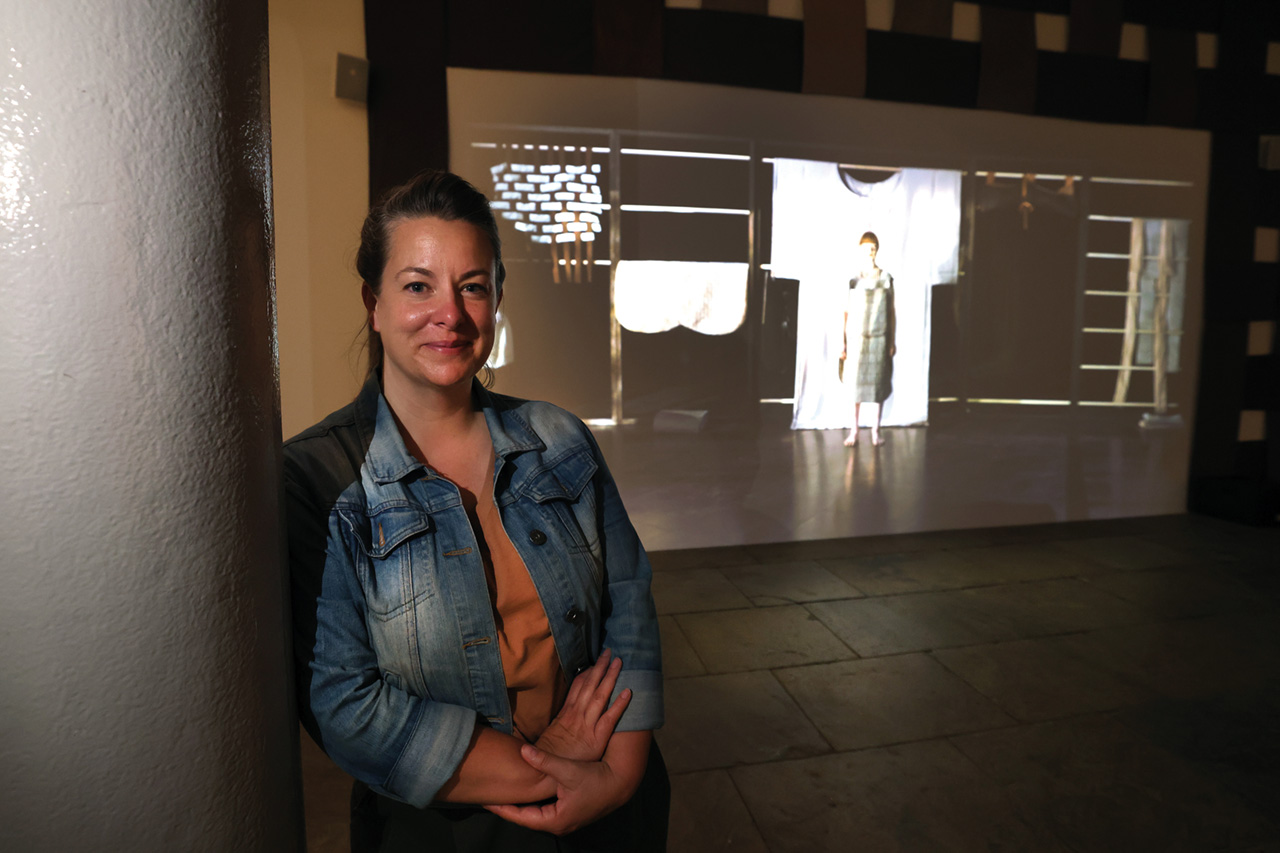In the frame: Emily Speed
The Cheshire-born artist was inspired by the city of Liverpool as a student. For her first major there however, initial inspiration came from an 1884 satirical novella
Artists draw inspiration from unanticipated places and for Flatland, her latest film installation, Emily Speed found herself inspired by a little-known Victorian novella. Sharing a title with Speed’s film, Edwin Abbott Abbott’s 1884 satire finds human existence restricted to two dimensions with women portrayed as straight lines while men are polygons operating within a hierarchical society.
Speed has coupled this study of class and patriarchy with a long-held fascination for the relationship between people and architecture.
“I think that particular interest initially came from my grandad, who was a project architect, and who introduced me to loads of art and amazing spaces,” explains the artist from her current base in Cheshire.
It’s this juxtaposition of architecture’s rigidity and the dynamism of the human form that intrigues Speed.
“That works on a few levels in this particular work. The book was a starting point, something to push against,” she says, adding, “Flatland is quite an intimate work looking at how groups work together and really form a microcosm of community – how they’ve all got to do their individual thing or everything falls apart. It’s quite an explicit metaphor, how everything can collapse if the balance of things just changes that little bit. It looks at building a solid structure but also examines the structure that is there within communities.”
Showing at Tate Liverpool, visitors to Flatland will get to see the film, with its four performers, projected onto a large screen alongside sets and costumes created for the piece, a second film which contains text from novelist Eley Williams and an Escher-like 1950 painting, by Portuguese artist Maria Helena Vieira da Silva, titled The Corridor.
“There’s a lot in Vieira da Silva’s work I relate to and respond to in my work and this painting depicts a semi-architectural space which is also concerned with psychology,” says Speed. “It’s amazing to be shown next to her.”
Another element examined in Flatland is the question of which particular place the artist regards as home. Following years spent studying in Edinburgh, working as an artist in Liverpool and time living in Japan and London, she found herself returning to the village she grew up in, Kingsley in Cheshire, around a decade ago.
“The village has come into my work for the first time really. Flatland looks at how where you live in your younger years shapes you and how you feel about moving back,” says Speed, adding that the creative community of Liverpool has also informed the work. “There’s an amazing artistic identity there and I wouldn’t be where I am at this point without being an artist in the city. The institutions there are
so supportive of local artists, places like
The Bluecoat and FACT, keeping such a close eye on what’s going on in Liverpool and really helping young artists. The whole place is so focused on culture, it’s amazing.”
Owing to this special relationship with the city, Speed finds the thought of exhibiting at such an institution as Tate Liverpool particularly daunting: “It’s nerve-racking,” she confesses with a laugh. “My grandad took me there when it opened so for someone from the North West, this is monumental. From coming here as an art student to be showing there is incredible.”
Emily Speed: Flatland is at Tate Liverpool until 2 Jan 2022

Leave a reply
Your email address will not be published.